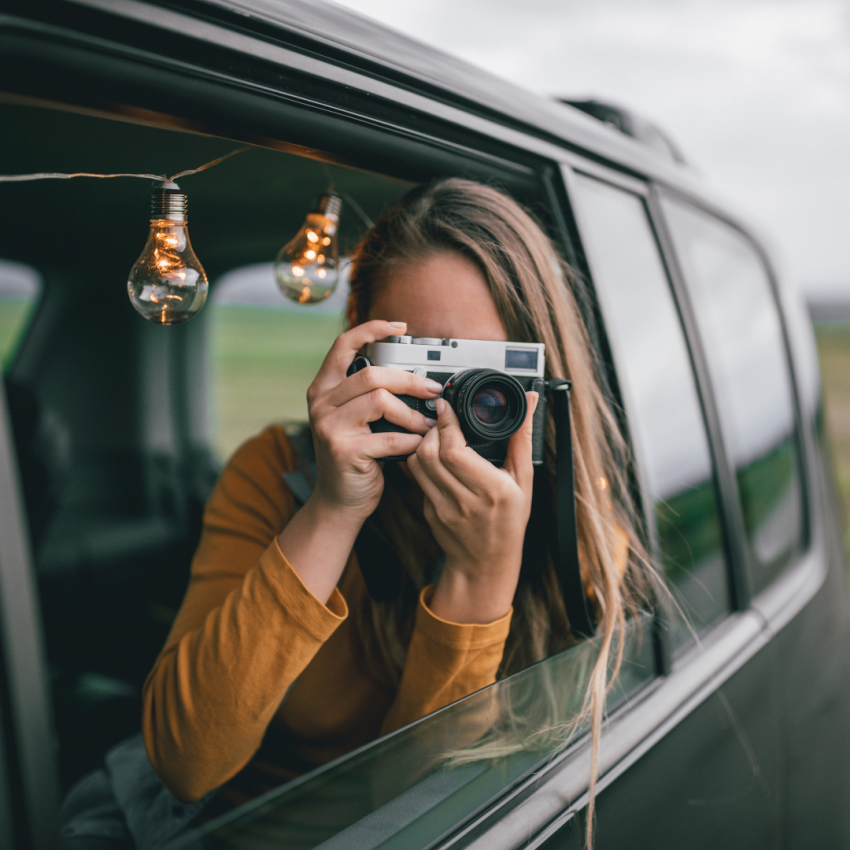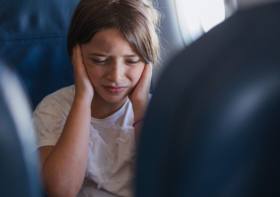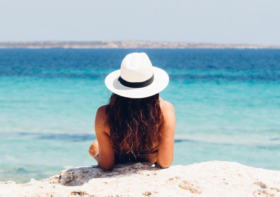A Guide to Travel Photography

Traveling opens your mind to new ideas, and improves your life immeasurably! If you’re planning a trip, or want to document your travels in photos, then you need to take amazing travel photos!
Ready to step up your photography game and capture the world in all its glory? Let’s dive into how you can start taking better travel photography.
What Is Travel Photography?
Travel photography is a type of photography that captures the experience of traveling to a specific location. It is often used to document the places we visit and the things we do while we are there.
Use Natural Light Whenever Possible
One of the best ways to improve your photos is to use natural light whenever possible. This means finding scenic spots with plenty of sunlight or taking shots inside when it’s bright outside. By using natural light, you’ll minimize the need for artificial lighting, which can add an unwanted level of brightness and complexity to your images.
Shoot in Raw Format if You Have the Opportunity
If you have the opportunity, shoot in RAW format instead of JPEG. The advantage to shooting in RAW is that you can more easily adjust settings like exposure and highlights/shadows after the fact. This gives you a better chance of getting great results without having to worry about losing data or making too many edits later on.
Experiment With HDR Photography Techniques
If you have an HDR camera available, experiment with HDR photography techniques (high dynamic range) when traveling to new places. By capturing multiple exposures at different exposure levels, You can create striking images that capture both the detail and coloration in a scene perfectly. HDR photography can be used to enhance landscapes, cityscapes.
Equipment
There are many other pieces of equipment that can be used in photography, and the best way to learn about them is to experiment and see what works best for you. Keep on reading to learn about their differences:
1. DSLR cameras
DSLR cameras are digital single-lens reflex cameras that use a rotating mirror to direct light from the lens to the image sensor. The image sensor is a charge-coupled device (CCD) or a complementary metal-oxide-semiconductor (CMOS) that converts the light into electrical signals. These signals are then sent to a digital signal processor (DSP), which converts them into a digital image.
DSLR cameras usually have a larger sensor than other types of digital cameras, and this allows for more light to be captured, resulting in better image quality. They also have the ability to interchange lenses, which gives the photographer more control over the final image. DSLR cameras are more expensive than other types of digital cameras, but they offer the best quality pictures.
2. Lens
Lenses are the tools of photography, and there is a vast array of them available to suit different needs and photographic styles. The most important factor in choosing a lens is its focal length, which determines how much of the scene will be captured and how close or far away objects will appear. Lens selection also depends on the type of camera you are using, as different cameras have different sized sensors.
Wide angle lenses have short focal lengths and are great for landscape photography, while telephoto lenses have long focal lengths and are ideal for capturing distant subjects. There are also many specialized lenses available, such as fisheye lenses and macro lenses. No matter what type of photography you’re interested in, there is a lens out there that will help you achieve your vision.
3. Camera Bags
There are many different types and sizes of camera bags available on the market, and the contents of each bag will vary depending on the type of photography the user is interested in. Many camera bags will contain space for a camera body, lenses, flash unit, batteries, memory cards, and other small items such as a dust blower and lens cloth. Some bags will also have special compartments or pockets designed for holding a compact tripod or other necessary equipment.
4. Camera Harness
A camera harness is an essential piece of equipment for travel photography. When you are out exploring diverse and sometimes challenging locations in the world, a camera harness becomes incredibly valuable. It provides an easy way to keep your cameras easily accessible.
The market offers a wide variety of camera harnesses and it is important to choose one that aligns with your style, provides a comfortable fit, accommodates all your gear, and is easy to use. If you find yourself unsure and doubtful about choosing a camera harness, exploring informative blogs can be a helpful resource. These blogs often provide valuable insights into what to consider and look for when buying a camera harness, thus ensuring that you make an informed decision before the purchase.
5. Memory Cards
A memory card is a small storage device that is used to store data, typically in the form of digital photographs. Memory cards are used in many digital cameras and other electronic devices, such as smartphones and computers. There are various types of memory cards, including SD cards, microSD cards, and CompactFlash cards. Memory cards typically have a capacity of 1GB to 64GB.
6. Tripods
Tripods are necessary for many types of photography, especially if you want to take high-quality photos. They stabilize your camera, allowing you to take clear, sharp pictures without shaking or blurring. They also allow you to use long exposures and high zoom levels without losing image quality. Many tripods come with built-in features like level indicators and timers, making them even more convenient to use.
Types of Photography
There are many types of photography, and each has its own unique benefits and drawbacks. Here are some of the most popular types of photography:
Black and White Photography
Black and white photography has been around since the dawn of photography and is still commonly used by photographers today. There are two main types of black and white photography: film and digital.
Film black and white photography are created by using black and white film to capture images. Digital black and white photography are created by editing photos in black and white using photo editing software. Both types of black and white photography have their own unique look and feel.
Candid Photography
There are many different types of candid photography, from photojournalistic images that capture natural moments as they unfold, to more posed pictures that still aim to capture the essence of the subject. No matter what style of candid photography you prefer, the goal is always to capture real life as it is happening, without the interference of the photographer.
This can be a challenging but ultimately rewarding style of photography, as it allows the viewer to see the world through the lens of the camera, and can result in some truly unique and striking images.
Landscape Photography
Different types of landscape photography include cityscape, seascape, and even astrophotography. Each type of landscape photography requires a different skill set and knowledge in order to get the perfect shot.
- Cityscape photography is all about taking pictures of the skyline and architecture of a city. This type of photography requires an understanding of composition and light in order to get the best results.
- Seascape photography is similar to landscape photography, but instead of photographing mountains or forests, you are photographing the ocean. This type of photography can be challenging because of the changing light and weather conditions.
- Astrophotography is a type of landscape photography that focuses on the night sky. This type of photography requires a long exposure in order to capture the stars and other celestial bodies.
Macro Photography
There are many different types of macro photography, each with its own unique challenges and benefits. Here are some of the most popular types of macro photography:
- Close-up photography – This type of macro photography is taken at a very close range, often just a few inches away from the subject. This can be challenging, as it can be difficult to keep the camera steady and get a clear image. However, close-up photography can be very rewarding, as it can capture amazing details that would otherwise be invisible to the naked eye.
- Product photography – This type of macro photography is often used to photograph small objects, such as jewelry or electronics. It is important to have a steady hand and a good lighting setup when taking product photos, as even the smallest movement can ruin the shot.
- Nature photography – Macro nature photography can be a great way to capture the beauty of the natural world. Flowers, insects, and other small creatures can make for fascinating subjects. Often, a tripod is necessary to get a clear shot, as the slightest movement can blur the image.
- Food photography – Food photography is a type of macro photography that is becoming increasingly popular. It can be challenging to photograph food, as it often moves.




Leave a Reply